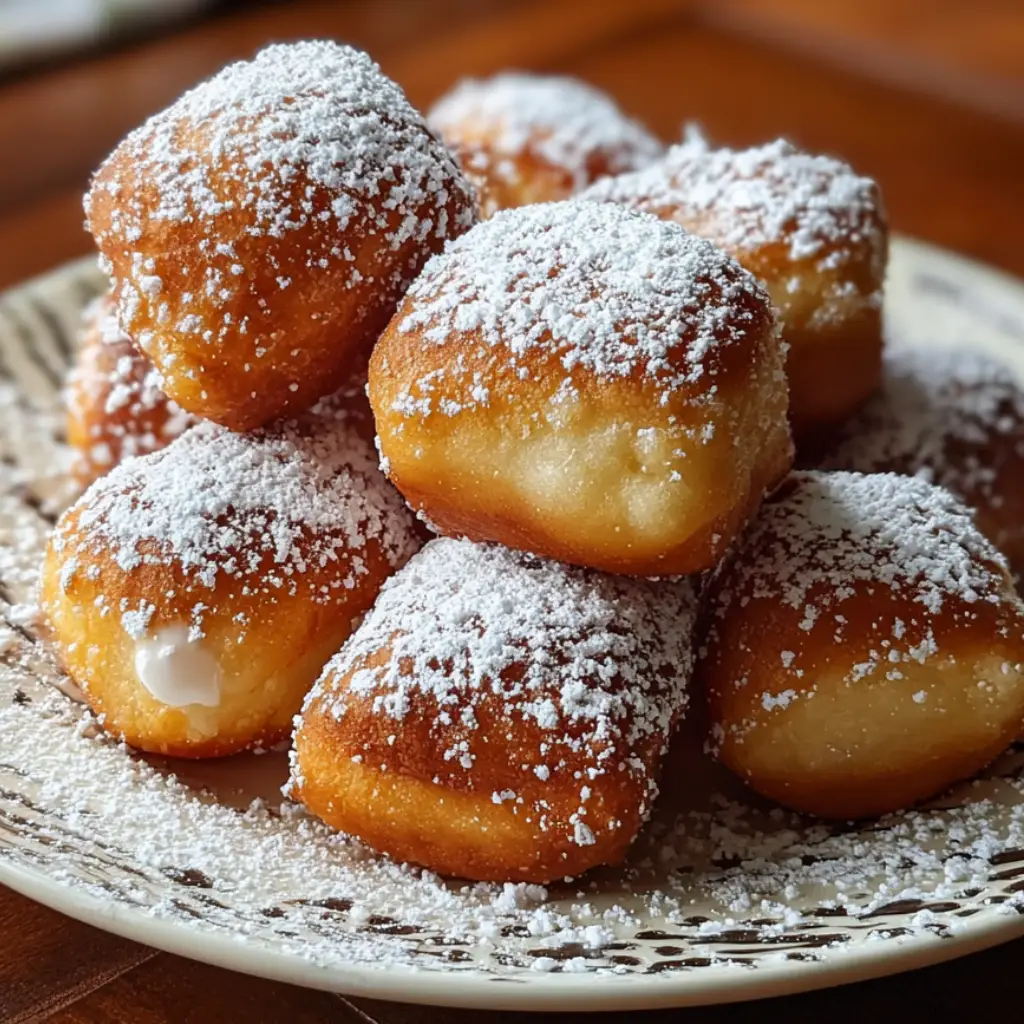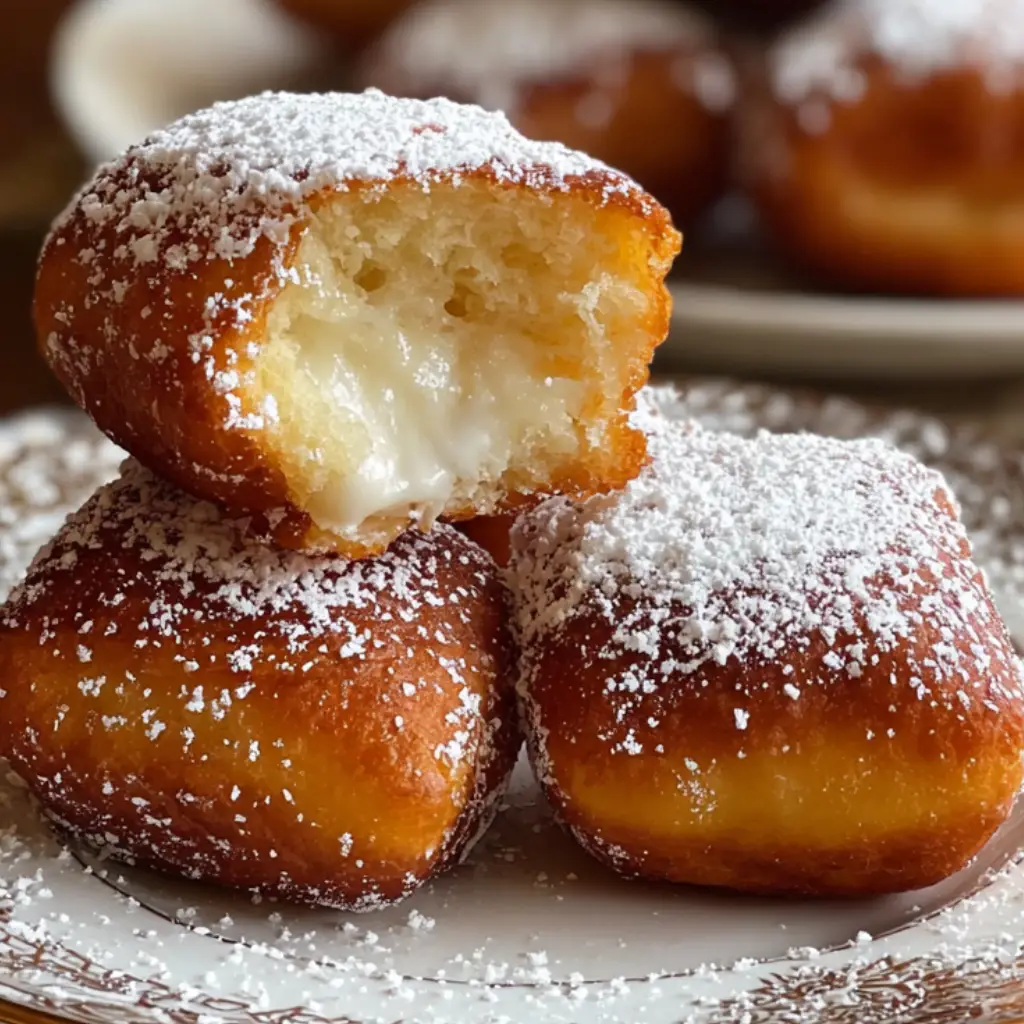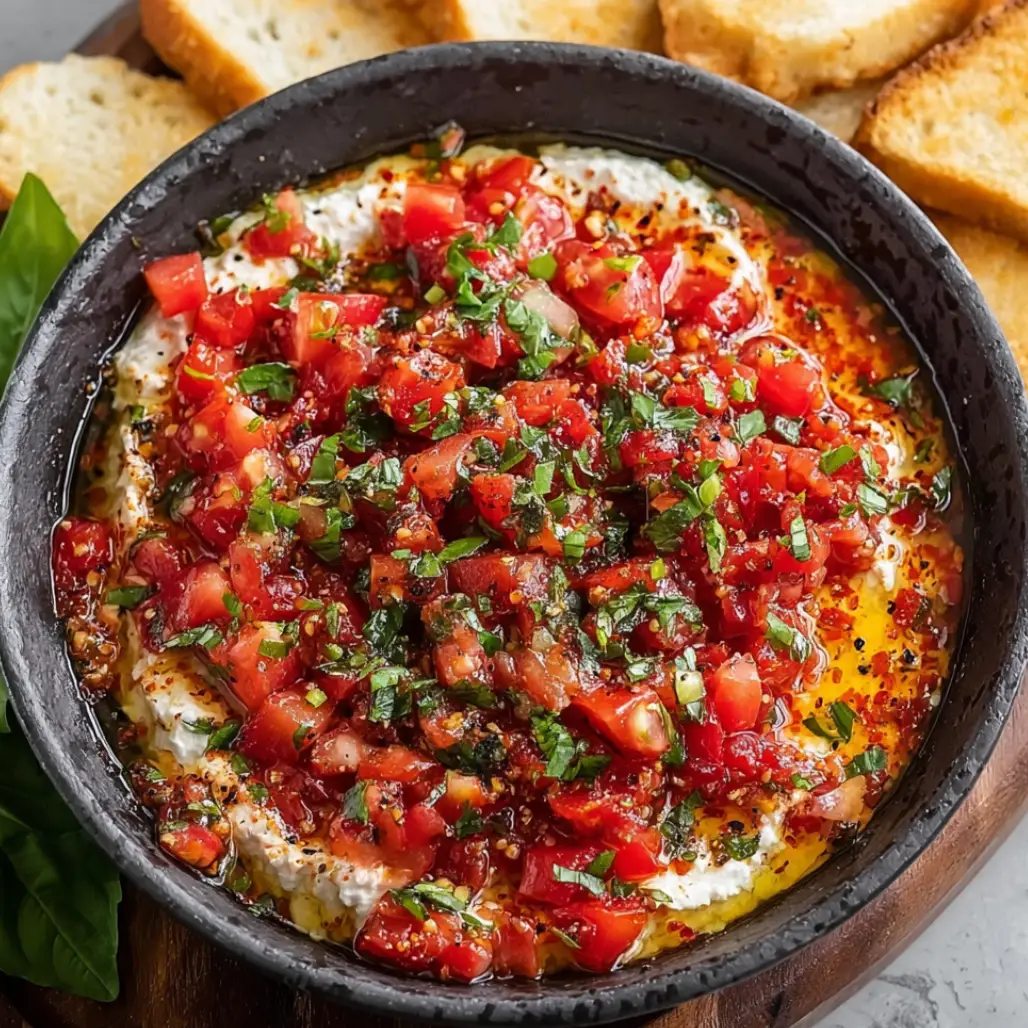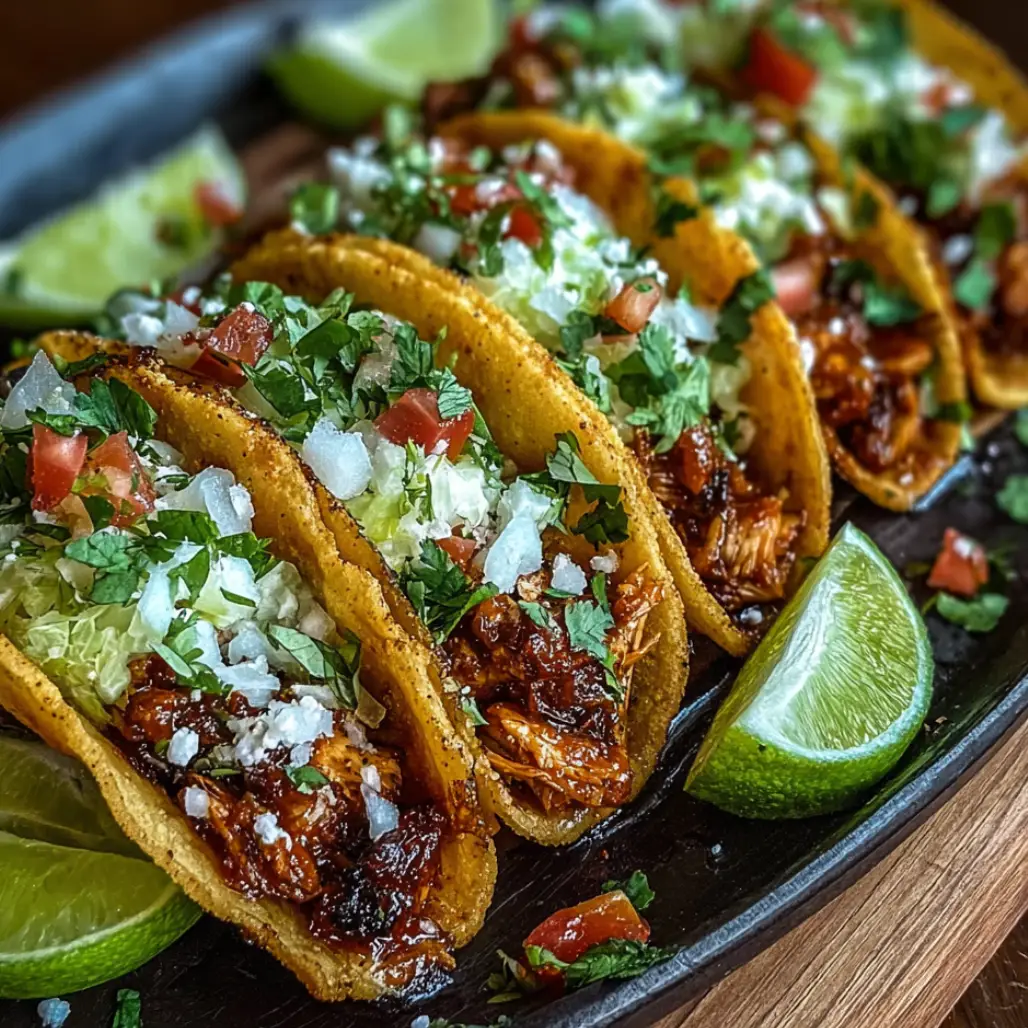| Prep Time | Cook Time | Total Time | Serves |
|---|---|---|---|
| 30 minutes | 15 minutes | 3 hours | 12-15 beignets |
There’s something absolutely magical about the moment when you bite into a perfectly made vanilla French beignets and experience that incredible contrast between the crispy, golden exterior and the pillowy-soft, airy interior that’s been infused with the warm, comforting essence of pure vanilla, because these delicate pastries represent the very soul of New Orleans cuisine and bring the authentic taste of the French Quarter directly to your kitchen. This isn’t just another fried dough recipe because vanilla French beignets require a delicate balance of technique, timing, and quality ingredients that transforms simple pantry staples into something truly extraordinary, while the generous dusting of powdered sugar creates that iconic cloud of sweetness that makes every bite feel like a celebration of culinary artistry.
The beauty of homemade vanilla French beignets lies in how they capture the essence of one of America’s most beloved regional specialties because when you master the art of creating these tender, yeasted pastries at home, you’re not just making a dessert but creating an experience that transports you to the bustling sidewalk cafes of the French Quarter where jazz music fills the air and the aroma of fresh coffee mingles with the sweet perfume of powdered sugar.
Why These Vanilla French Beignets Will Transform Your Breakfast Game
Traditional breakfast pastries often rely on heavy butter content or complex lamination techniques, but vanilla French beignets achieve their signature texture through the magic of yeast and proper fermentation because the slow rise develops both flavor and structure while creating those characteristic air pockets that make each bite so satisfying, and the addition of high-quality vanilla extract elevates these simple ingredients into something that rivals the most famous beignet shops in New Orleans.
The genius behind vanilla French beignets comes from understanding how yeast, liquid ratios, and frying temperature work together to create pastries that are simultaneously crispy and tender because the enriched dough contains just enough fat and sugar to create richness without weighing down the delicate structure, while the vanilla adds aromatic complexity that distinguishes these from plain fried dough and makes them worthy of special occasions.
Unlike heavy donuts or dense pastries that can feel overwhelming first thing in the morning, vanilla French beignets offer a lighter approach to indulgent breakfast treats because their airy texture and bright vanilla flavor provide satisfaction without the heaviness that can come from overly rich baked goods, making them perfect for leisurely weekend mornings or special brunch gatherings.
The cultural significance of vanilla French beignets cannot be understated because they represent a direct connection to the rich culinary heritage of Louisiana’s French colonial period, and learning to make them at home allows you to participate in a tradition that has been bringing joy to families and visitors for centuries while creating your own memorable moments around the breakfast table.
Essential Ingredients for Perfect Vanilla French Beignets
- 1 cup warm water (110°F for optimal yeast activation)
- 1 packet (2 1/4 teaspoons) active dry yeast (for proper rising)
- 1/2 cup granulated sugar (divided for yeast and dough)
- 1 large egg (for richness and structure)
- 1/2 cup evaporated milk (for tender crumb)
- 2 teaspoons pure vanilla extract (for authentic flavor)
- 1 teaspoon salt (for flavor enhancement)
- 4 cups all-purpose flour (for ideal texture)
- 3 tablespoons melted butter (for richness)
- Vegetable oil for frying (about 6 cups)
- 2 cups powdered sugar (for generous dusting)
- Additional vanilla extract (for enhanced flavor)
The Art of Creating Perfect Vanilla French Beignets
Creating exceptional vanilla French beignets requires understanding the science behind yeast fermentation and gluten development because these pastries depend on achieving the perfect balance between structure and tenderness, and mastering the techniques of dough handling, proper rising, and precise frying temperature ensures consistently excellent results that rival the best New Orleans establishments.
The foundation of outstanding vanilla French beignets begins with proper yeast activation because healthy, active yeast is essential for creating the light, airy texture that defines these pastries, and taking time to ensure your yeast is properly proofed prevents disappointment later while building confidence in your ability to create professional-quality results at home.
Temperature control plays a crucial role in vanilla French beignets success because the dough needs warmth for proper rising while the frying oil must be precisely maintained to create the perfect golden exterior without overcooking the interior, and understanding how to manage these different temperature requirements throughout the process ensures consistent results every time.
The timing aspect of vanilla French beignets involves understanding how fermentation develops flavor while creating the ideal texture because rushed rising produces dense, heavy pastries while over-proofed dough can collapse during frying, and learning to recognize the visual and tactile cues that indicate perfect readiness builds the intuition necessary for beignet mastery.
Step-by-Step Instructions for Amazing Vanilla French Beignets
Step 1: Activate the Yeast Foundation
Begin your vanilla French beignets by combining warm water with a pinch of the granulated sugar and the active dry yeast in a large mixing bowl because the sugar provides food for the yeast while the warm temperature creates ideal conditions for activation, and allow this mixture to sit undisturbed for 5-10 minutes until it becomes foamy and fragrant, which indicates healthy yeast activity.
Observe the mixture carefully during this time because properly activated yeast will create a thick, creamy foam on the surface that smells distinctly yeasty and pleasant, while inactive yeast will remain flat and odorless, and if your yeast doesn’t foam properly, discard the mixture and start over with fresh yeast to ensure success with your vanilla French beignets.
Professional Tip: Test your water temperature with a thermometer because water that’s too hot will kill the yeast while water that’s too cool won’t activate it properly, and 110°F is the ideal temperature that feels barely warm to the touch.
Key Points: Proper yeast activation ensures good rise, sugar feeds the yeast for better activity, and patience during this step guarantees success for your vanilla French beignets.
Step 2: Create the Enriched Dough Base
Add the beaten egg, evaporated milk, vanilla extract, and remaining sugar to the foamy yeast mixture because these ingredients provide the richness and flavor that distinguish vanilla French beignets from plain bread dough, and whisk everything together until smooth and well-combined to create a uniform liquid base for your pastry dough.
Gradually incorporate the salt and flour, one cup at a time, mixing thoroughly after each addition because this gradual process prevents lumps while allowing you to monitor the dough’s development, and continue mixing until the dough becomes smooth and slightly sticky but manageable, which indicates proper gluten development for your vanilla French beignets.
Professional Tip: Use a stand mixer with a dough hook if available because the enriched dough can be sticky and challenging to mix by hand, and the mechanical action helps develop gluten more efficiently for better texture.
Key Points: Gradual flour addition prevents lumps, enriched ingredients create tender texture, and proper mixing develops the structure needed for light vanilla French beignets.
Step 3: Incorporate Butter and Final Mixing
Add the melted butter to the dough and mix thoroughly until completely incorporated because the fat adds richness while contributing to the tender crumb that makes vanilla French beignets so appealing, and continue mixing until the dough pulls away from the sides of the bowl and feels smooth and elastic when stretched, indicating proper gluten development.
Turn the dough onto a lightly floured surface and knead gently for 2-3 minutes until it becomes smooth and supple because this final kneading develops the gluten structure necessary for proper rising while ensuring all ingredients are evenly distributed throughout your vanilla French beignets dough.
Professional Tip: The dough should feel slightly sticky but not overly wet, and if it’s too sticky to handle, add flour one tablespoon at a time until it reaches the proper consistency for easy handling.
Key Points: Proper butter incorporation ensures even richness, gentle kneading develops structure, and correct dough consistency makes shaping easier for vanilla French beignets.
Step 4: First Rise and Flavor Development
Place the kneaded dough in a greased bowl and turn it once to coat all surfaces with oil because this prevents the dough from drying out during the rising period, then cover with a damp towel or plastic wrap and place in a warm, draft-free location for 1-2 hours until doubled in size, which allows the yeast to create the air pockets that make vanilla French beignets so light.
Check the dough’s progress periodically by gently pressing two fingers into the surface because properly risen dough will retain the indentation without springing back, while under-risen dough will quickly fill the depression, and this visual test helps you determine when your vanilla French beignets dough is ready for the next step.
Professional Tip: Create an ideal rising environment by placing the bowl near a warm oven or in a slightly warmed oven that’s been turned off, because consistent warmth speeds fermentation while developing better flavor.
Key Points: Proper rising time develops flavor and texture, warm environment speeds fermentation, and visual cues indicate readiness for shaping vanilla French beignets.
Step 5: Shape and Prepare for Frying
Punch down the risen dough gently to release excess gas, then turn it onto a lightly floured surface and roll it out to approximately 1/2-inch thickness because this thickness ensures the vanilla French beignets will cook through properly while maintaining their characteristic puffy texture, and use a sharp knife or pizza cutter to cut the dough into 2-inch squares.
Arrange the cut squares on a floured baking sheet with space between each piece and cover with a light towel for a final 15-20 minute rise because this brief second rise ensures maximum puffiness when the vanilla French beignets hit the hot oil, while the spacing prevents them from sticking together during this final fermentation period.
Professional Tip: Cut the dough squares cleanly without twisting the knife because clean cuts allow for better rising and more uniform puffing during frying, creating more attractive vanilla French beignets.
Key Points: Proper thickness ensures even cooking, clean cutting promotes better rising, and final proofing maximizes puffiness in finished vanilla French beignets.
Step 6: Fry to Golden Perfection
Heat vegetable oil in a heavy-bottomed pot to exactly 350°F because this temperature creates immediate searing that forms the crispy exterior while allowing the interior to cook through without becoming greasy, and use a thermometer to monitor the temperature throughout the frying process to maintain consistency for your vanilla French beignets.
Carefully add 3-4 dough squares to the hot oil, being careful not to overcrowd because too many pieces will lower the oil temperature and result in greasy, soggy pastries, and fry for 1-2 minutes per side until golden brown and puffy, then remove with a slotted spoon and drain briefly on paper towels before dusting generously with powdered sugar while still warm.
Professional Tip: Maintain oil temperature between batches by allowing it to return to 350°F before adding more dough, and test the first beignet to adjust timing if needed for perfect golden color.
Key Points: Correct oil temperature ensures proper texture, avoiding overcrowding maintains heat, and immediate sugar dusting creates the authentic vanilla French beignets experience.
Professional Tips for Outstanding Results
Quality ingredient selection significantly impacts your vanilla French beignets success because fresh, active yeast creates better rise while pure vanilla extract provides superior flavor compared to imitation alternatives, and using evaporated milk rather than regular milk contributes to the tender, rich texture that distinguishes authentic beignets from ordinary fried dough.
Oil management becomes crucial for consistent vanilla French beignets because maintaining proper temperature throughout frying ensures even cooking and optimal texture, while using a neutral oil with a high smoke point prevents off-flavors that could interfere with the delicate vanilla taste, and filtering oil between batches maintains quality for multiple frying sessions.
Timing coordination helps ensure perfect vanilla French beignets because having your oil heated and powdered sugar ready before you start frying prevents delays that could affect texture, while working in small batches allows you to maintain oil temperature and ensures each beignet receives individual attention for optimal results.
Environmental considerations affect vanilla French beignets because humidity can slow rising times while temperature fluctuations impact yeast activity, so adjusting your rising time based on kitchen conditions and using visual cues rather than strict timing helps achieve consistent results regardless of weather or season.
Creative Variations to Explore
The filled vanilla French beignets variation incorporates pastry cream or jam injected after frying because these additions create a more substantial dessert while maintaining the classic exterior, and flavors like lemon curd, chocolate ganache, or seasonal fruit preserves add sophistication that makes these suitable for elegant brunch presentations or special occasions.
For those who enjoy breakfast favorites with international flair, the café au lait version incorporates coffee into both the dough and a special dusting mixture because the combination of vanilla and coffee creates complex flavor that pairs beautifully with morning beverages while maintaining the traditional New Orleans connection.
The citrus-enhanced vanilla French beignets version adds orange or lemon zest to the dough because citrus oils brighten the vanilla flavor while adding aromatic complexity that makes each bite more interesting, and a complementary citrus-scented powdered sugar dusting ties the flavors together beautifully.
Seasonal spice variations incorporate warm spices like cinnamon, cardamom, or nutmeg because these aromatics complement vanilla while creating themed versions appropriate for holidays or special occasions, and the spices can be added to both the dough and the dusting mixture for layered flavor development.
Perfect Pairing Ideas
Classic New Orleans combinations complement vanilla French beignets beautifully because café au lait provides the traditional pairing that balances the sweetness while cleansing the palate, and refreshing beverages offers additional drink inspiration that works well with these rich pastries.
Elegant brunch menus benefit from vanilla French beignets because their impressive appearance and delicious flavor make them perfect centerpieces for special occasion meals, and pairing them with fresh fruit salads from our salads collection creates balanced presentations that satisfy without overwhelming.
Casual entertaining works wonderfully with vanilla French beignets because they can be prepared ahead and fried fresh when guests arrive, creating an interactive cooking experience, and serving them alongside other snacks and appetizers provides variety for different taste preferences.
Dessert course applications allow vanilla French beignets to shine as sophisticated endings to dinner parties because their light texture doesn’t overwhelm after a substantial meal, and exploring our dessert recipes provides additional sweet inspiration for creating memorable dining experiences.
Discover More Incredible Pastry Options
Expanding your pastry repertoire beyond vanilla French beignets opens up exciting possibilities because mastering yeast-based doughs provides foundation skills for creating various breakfast pastries and sweet breads, while understanding frying techniques enables you to tackle other regional specialties and international favorites with confidence.
The world of French pastry offers endless inspiration because techniques learned from making vanilla French beignets translate to other choux pastry applications and yeasted treats, and exploring flavored dips and marinades provides unexpected flavor combinations that work beautifully with sweet applications.
Seasonal adaptations keep your vanilla French beignets interesting throughout the year because incorporating seasonal extracts, spices, or special dusting mixtures creates themed variations that reflect holidays and changing seasons while maintaining the beloved foundation recipe that makes these pastries so special.
Building expertise in fried pastries ensures you’re always prepared for special occasions because having reliable recipes like vanilla French beignets in your repertoire means you can create impressive breakfast treats that showcase your developing culinary skills while providing memorable experiences for family and guests.
Storage and Freshness Guidelines
Immediate serving provides the best vanilla French beignets experience because these pastries are at their absolute peak when fresh from the oil and still warm, with the contrast between crispy exterior and tender interior most pronounced during the first few minutes after frying, making timing crucial for optimal enjoyment.
Short-term storage works for vanilla French beignets when necessary because they can be kept at room temperature for up to 6 hours after frying, though the texture gradually softens and the crispiness diminishes, and reheating in a 350°F oven for 2-3 minutes can restore some of the original texture when serving later.
Dough preparation strategies help when entertaining because the vanilla French beignets dough can be made up to 24 hours in advance and refrigerated after the first rise, allowing you to shape and fry them fresh when guests arrive while reducing last-minute preparation stress.
Freezing options work well for vanilla French beignets dough because shaped, unfried pieces can be frozen on baking sheets and then stored in freezer bags for up to one month, and frying directly from frozen adds just 1-2 minutes to the cooking time while producing results nearly identical to fresh dough.
The Science Behind Perfect Beignets
Understanding fermentation explains why rising time is crucial for vanilla French beignets because yeast produces both carbon dioxide for leavening and flavor compounds through metabolic processes, and the slow development of these elements creates the complex taste and ideal texture that distinguishes well-made beignets from rushed versions.
The frying science reveals why oil temperature is so critical for vanilla French beignets because the Maillard reaction requires specific heat levels to create the golden color and crispy texture while the interior steams gently, and understanding how moisture evaporation creates the characteristic hollow interior helps you achieve consistent results.
Gluten development mechanics show why proper mixing and kneading matter for vanilla French beignets because the protein network must be strong enough to trap gas bubbles yet tender enough to create the desired soft texture, and balancing these requirements through technique creates pastries with ideal structure and mouthfeel.
Ingredient interactions explain why vanilla French beignets require specific ratios because the fat content affects tenderness while sugar influences browning and flavor development, and the liquid ratios determine final texture, helping you understand how modifications might affect the finished product.
Troubleshooting Common Issues
If your vanilla French beignets don’t puff properly during frying, the issue usually stems from inactive yeast or insufficient rising time because under-fermented dough lacks the gas bubbles necessary for expansion, and ensuring proper yeast activation while allowing adequate rising time prevents this disappointing result that affects both texture and appearance.
Dense, heavy beignets typically result from too much flour or over-mixing because excess gluten development creates tough texture while incorrect ratios upset the delicate balance of ingredients, and measuring flour properly while mixing just until combined helps achieve the tender crumb that characterizes perfect vanilla French beignets.
Greasy texture problems occur when oil temperature is too low or beignets are overcrowded because these conditions prevent proper sealing and cause excess oil absorption, and maintaining 350°F oil temperature while frying in small batches ensures the crispy exterior that keeps oil out of the pastry interior.
Bland flavor issues affect vanilla French beignets when vanilla extract is insufficient or poor quality because artificial vanilla lacks the complexity of pure extract, and using high-quality vanilla while ensuring proper measurement creates the aromatic intensity that makes these pastries so memorable and satisfying.
Additional Inspiration and Ideas
Regional variations offer exciting possibilities for vanilla French beignets because different Louisiana parishes have their own traditional approaches to these pastries, and researching historical recipes provides inspiration for authentic adaptations while understanding how various cultural influences shaped this beloved New Orleans specialty.
International connections reveal how vanilla French beignets relate to similar pastries from other cultures because the French colonial influence created variations throughout former territories, and exploring these global cousins provides ideas for creative adaptations that honor the original while incorporating new flavors and techniques.
Modern interpretations allow vanilla French beignets to evolve while respecting tradition because contemporary pastry techniques can enhance texture and presentation without losing the essential character, and considering how current dietary preferences might be accommodated opens possibilities for broader appeal while maintaining authenticity.
The versatility of the basic technique extends beyond traditional vanilla French beignets because the same dough methods work with different flavor profiles and shapes, and you can find inspiration for sweet applications in our perfect sides collection for ideas about balancing flavors and creating memorable presentations.
Advanced Techniques and Flavor Development
Professional presentation elevates vanilla French beignets from simple breakfast pastries to elegant desserts because thoughtful plating, garnish selection, and temperature consideration create restaurant-quality experiences, and learning these finishing techniques helps you serve impressive results that showcase your developing pastry skills.
Flavor layering opportunities exist within vanilla French beignets because incorporating vanilla at multiple stages creates depth while additional aromatic elements can enhance without overwhelming, and understanding how different vanilla sources contribute unique characteristics helps you customize the flavor profile to your preferences.
Texture customization allows you to modify vanilla French beignets for different applications because adjusting flour ratios or rising times creates variations suitable for different serving styles, and considering savory sides provides unexpected inspiration for balancing sweet pastries within broader meal contexts.
Quality control measures ensure consistent vanilla French beignets results because maintaining detailed notes about timing, temperatures, and ingredient sources helps you replicate successful batches while identifying variables that affect outcomes, building expertise through systematic observation and continuous improvement.
Conclusion
These vanilla French beignets represent the perfect embodiment of New Orleans culinary tradition because they capture the essence of the French Quarter’s most beloved pastry while remaining achievable for home bakers willing to invest time and attention in proper technique, and mastering this recipe connects you to centuries of culinary heritage while creating your own memorable moments around the breakfast table.
The remarkable appeal of vanilla French beignets lies in how they transform simple ingredients through patience and technique into something truly extraordinary because the combination of aromatic vanilla, tender texture, and festive powdered sugar dusting creates an experience that transcends ordinary breakfast pastries while building confidence in advanced baking skills.
Whether you’re recreating vacation memories from New Orleans, introducing family to authentic regional cuisine, or simply wanting to master one of America’s most iconic pastries, these vanilla French beignets provide the perfect vehicle for creating special occasions at home because they combine impressive presentation with incredible flavor while offering endless opportunities for personalization and creative expression that will keep this recipe in your regular rotation for years to come.









